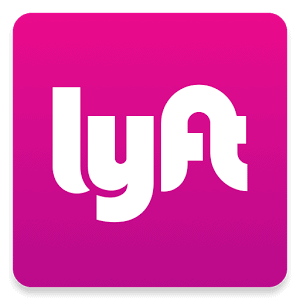How Ridesharing Platforms Help the Economy

 We have been saying for a while that ridesharing platforms like Lyft are different from traditional transportation firms, not just in the technology they use, but in the basic economics of the manner in which they operate. By meeting unserved demand with underused capital, through the mechanism of the price system and providing trust via feedback systems, they are delivering significant economic benefit to their consumers, their driver partners, and the community as a whole. That is why regulators should not interfere with the way they work, trying to apply regulations designed for completely different economic models that would have the effect of killing off these benefits.
We have been saying for a while that ridesharing platforms like Lyft are different from traditional transportation firms, not just in the technology they use, but in the basic economics of the manner in which they operate. By meeting unserved demand with underused capital, through the mechanism of the price system and providing trust via feedback systems, they are delivering significant economic benefit to their consumers, their driver partners, and the community as a whole. That is why regulators should not interfere with the way they work, trying to apply regulations designed for completely different economic models that would have the effect of killing off these benefits.
The ridesharing platform Lyft has just released its economic impact assessment, which quantifies some of these benefits. Here are some of the more interesting figures:
- Lyft passengers are helping to revitalize local communities by local spending. These consumers spend an additional $750 million in local economies, because they are able to get to hard-to-reach places, get to local bars and restaurants without having to worry about drink-driving laws, and stay out longer.
- Huge numbers of passengers (88%) say they have avoided driving drunk because of Lyft and 53% have used Lyft to help friends or family who need assistance after drinking – preventing them from the risk of tragedy.
- Over a quarter of Lyft rides (28%) start in low-income areas, demonstrating that ridesharing meets the needs of underserved communities, who are thereby able to engage in opportunities that would have been too expensive or time-consuming before.
- Ridesharing also helps build community relations. Most drivers (87%) have given a lift to a neighbor, and the same number have made a new friend or business contact as a result of a ride.
- Lyft drivers have earned over $1.5 billion – turning the underused asset of their vehicles into an income stream.
- Most drivers (72%) are the primary source of income for their household, and over half (57%) use their earnings to cover primary expenses such as food, housing, or medical care. Almost all (93%) are employed, seeking employment, students, or retired.
- This accords with the flexibility afforded by the independent contractor relationship that is fundamental to the platform concept. Almost all drivers (93%) say that the ability to set their own hours is very or extremely important, and a similar number (88%) schedule their driving around other activities such as jobs, childcare, or classes. Just under half (40%) are carers, helping children, elders, or people with disabilities.
- This means that only 18% of drivers use the platform for more than 20 hours a week.
- Lyft is reducing the cost of getting people to medical appointments by about a third.
These figures are in accord with anecdotal evidence from around the nation. Communities such as South Dallas, predominantly African-American and historically poor, are finding their residents have new opportunities as a result of the sharing economy. In many ways, ridesharing platforms are extending the virtues of automobility to new segments of the community.
Moreover, the overwhelming majority of ridesharing drivers are simply not interested in giving up the benefits of independent contracting, despite the court cases and regulations across the world aimed at forcing them to do so. Whether authorities are trying to turn ridesharing platforms into taxi firms or into unionized industries, the desires of the drivers should be taken into account – and they want, indeed need, the platforms to stay as they are.
The question for policy makers is not so much, “how do we use old tools to regulate the sharing economy?” as “how do we ensure that the sort of benefits we see provided by the sharing economy firms can be extended to other sectors?” For more on that, see my recent talk on the Future of Work.